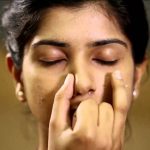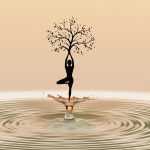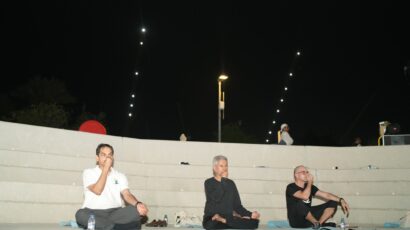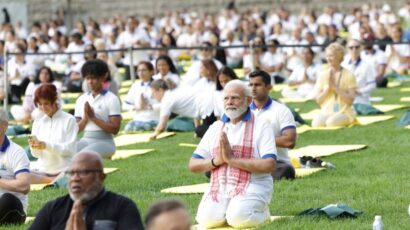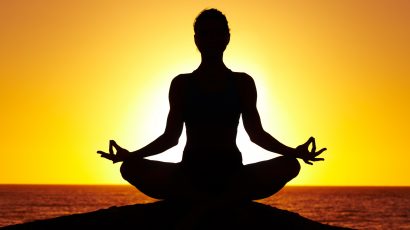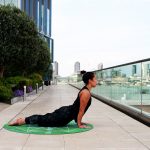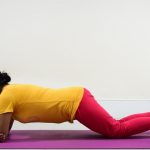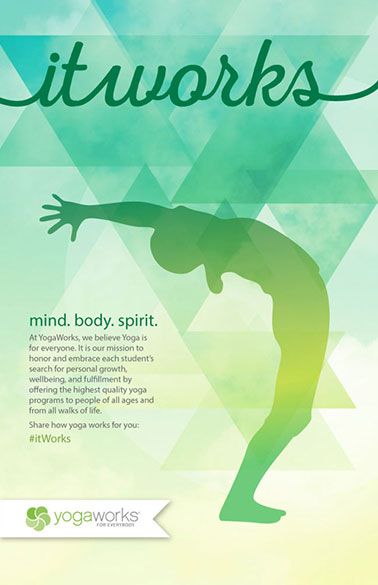Easy Yoga Practices You Can Do at Office to Reduce Work Stress
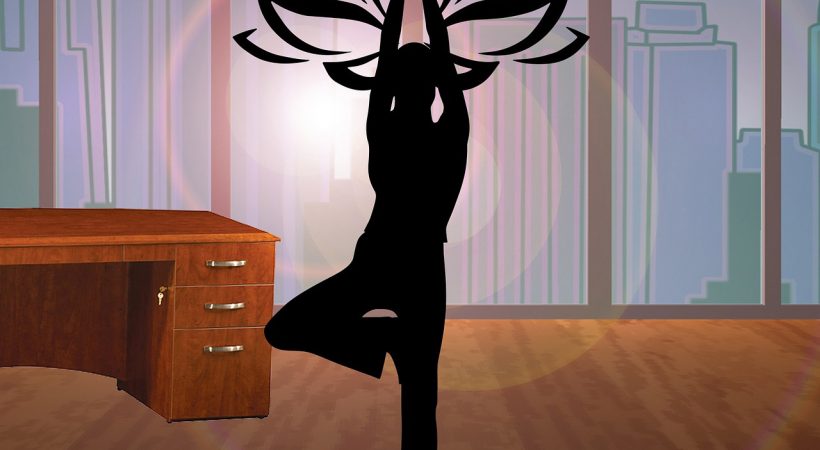
The competitive modern world has to fight hard to overcome the various situations that stress out the mind. Yoga can help in calming down the disturbed mind and subsequently improve your performance at work. There are some easy Yoga practices that could be followed even when you are in your office and it will help reduce the stress and thereby enhance your career.
Palming
Rub the hands together to heat them. Keep the palms over the eyes and breathe slowly.
Niralamba Dhyana
Join your hands and keep them close to your chest. Now keep the fingers apart and free your thoughts.
Pranayama
This yoga posture is aimed at attaining a healthy balance between the nerves, which are known as ‘Ida’, and ‘pingala’ in Ayurveda. Sit down and keep the spine straight. Keep the right hand in Vishnumudra and the left hand in Chinmudra.
Breathe in through the left nostril, closing the right nostril with the right thumb. Now release the right thumb and breathe in through the right nostril, closing the left nostril with the ring finger of the right hand. Now do this alternatively a few times.
Practicing this is effective for improving the breathing process and the functioning of the brain. It is also effective in dealing with anxiety and depression.
As a breathing exercise, it is very important to perform Pranayama mindfully. The proper practice of Pranayama calms down the mind thereby making the person serene and pleasant. If you can effectively control your breath, you would also be able to control your mind.
Moreover, Pranayama helps in improving your awareness of the nature and enhances the energy around you, connecting you better with those around you.
Other benefits of Pranayama includes better blood circulation, lower chances of contracting heart-related problems, relaxation for body and mind, better concentration, relief from stress, reducing the chances of depression, hypertension and anxiety etc.
Laghu Pranayama
Concentrate on your breath. If you are not able to focus, close your eyes. Keep one hand on the hip and use the thumb of the other hand to close one nostril. Breathe in through the other nostril. Now, close the later nostril and breathe out through the former one. Repeat this alternatively breathing through both the nostrils. Continue doing this for at least 15 times.
Anuloma Viloma Pranayama
Another form of Laghu Pranayama, this involves pranayama wherein you breathe in, hold the breath for 23 seconds each and breathe out for 34 seconds. .
Bhramari Pranayama
This is the kind of pranayama which is practiced along with making a buzzing sound while breathing in and breathing out. You have to make a powerful buzzing sound wherein the entire throat vibrates. This vibration would spread throughout the body as positive vibrations.
Ardha Matsyendrasana
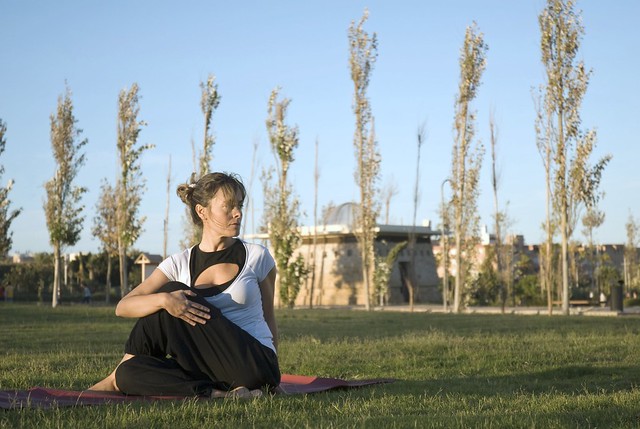
Sit down and stretch your legs. Bend the left leg and place in such a way that it comes under the right foot. Now bend the right leg and place it on the left side of the left thigh in a way that the sole of the feet is placed on the floor. Hold the right toe with the left hand by placing it above the left thigh. Now move your right hand back and hold your left hip. Now try to turn back through your right side. Stretch your body to the maximum. Breathe normally and remain in the position for some time and slowly relax and come back to the initial position. Do this with the alternate sides. Repeat this for 4 times at least.
This asana boosts the Stomach, the Kidneys, the Liver, Pancreas and the Adrenal glands. It is effective in the treatment of muscle pain and arthritis.
Benefits:
- Strengthens the mind by making it calm.
- Improves concentration
- Improves the blood circulation
- Reduces stress
- Reduces fatigue
- Keeps the mind free from unwanted thoughts
- Reduces blood pressure
- Purifies the nervous system
- Strengthens the lungs
- Improves confidence.
Shanmukhi Mudra (Yoni Mudra)
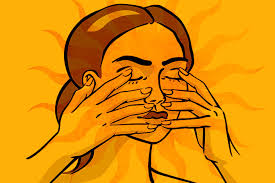
Close the flaps of your ears with the respective thumbs. Keep the middle fingers and the index fingers over the eye, the ring fingers below the nose and the little finger below the lips. Listen to the slow roaring sound that you can hear when you close your ears. Breathe slowly.


